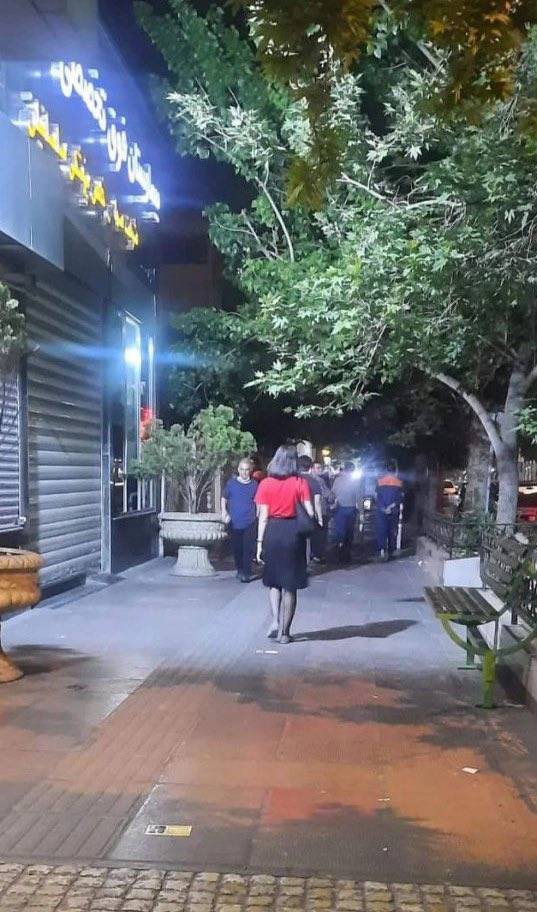Iran, a country known for its strict dress code for women, recently made headlines when Roya Heshmati, a 33-year-old woman, defied the hijab requirement and received 74 lashes as a punishment. This incident has sparked a global conversation about women’s rights and the enforcement of conservative dress codes. In this article, we will delve into the details of Roya Heshmati’s case, the broader implications of the hijab dress code in Iran, and the ongoing fight for women’s rights in the country.
The Case of Roya Heshmati
Roya Heshmati, a resident of Tehran, found herself at the center of controversy when she appeared bareheaded on several occasions, openly defying the hijab dress code. As a result, she was charged with “encouraging permissiveness” and received 74 lashes as punishment. The lashes were carried out in accordance with the law and Sharia, as stated by the judiciary’s Mizan Online website.
The judiciary’s report explained that Roya Heshmati’s penalty was imposed for violating public morals. By appearing unveiled in busy public places in Tehran, she was seen as encouraging permissiveness and disregarding the cultural norms and values upheld by the Iranian society. Her actions were deemed disgraceful, leading to her conviction and subsequent punishment.
The Dress Code in Iran

Since the Islamic Revolution of 1979, women in Iran have been legally required to cover their neck and head with a hijab. This dress code is enforced by the morality police and has been a subject of debate and contention among Iranian citizens. The requirement to wear the hijab is seen as a reflection of Islamic values and a means to preserve modesty and public morality.
While whippings for breaching the dress code are relatively uncommon, officials have recently intensified their efforts to crack down on those who defy the rules. This crackdown was prompted by the surge of anti-government protests that began in late 2022, following the death of Mahsa Amini, a 22-year-old Iranian Kurd who was arrested for an alleged breach of the dress code.
During the protests, many women discarded their headscarves or even burned them as a symbol of resistance. The act of defiance gained momentum, with more women openly flouting the dress code. In response, the authorities have increased surveillance and shut down businesses that fail to comply with the rules.
Roya Heshmati’s case sheds light on the ongoing struggle for women’s rights in Iran. While the hijab dress code is deeply ingrained in Iranian society, there is a growing movement advocating for greater freedom of choice and individual expression. Women, like Roya Heshmati, are challenging the status quo and risking punishment to assert their autonomy.
Kurdish Origins and Ethnic Discrimination
Roya Heshmati, identified as being of Kurdish origins, faces not only the consequences of defying the hijab dress code but also the potential discrimination faced by ethnic minorities in Iran. Hengaw, a Kurdish-focused rights group, highlighted her Kurdish background, emphasizing the intersectionality of her struggle for personal freedom and equal rights.
Social media platforms have played a crucial role in amplifying the voices of those defying the hijab dress code in Iran. Roya Heshmati’s case gained significant attention after she posted a photo of herself online without wearing the mandatory hijab.
The fight for women’s rights in Iran faces numerous challenges, both legal and cultural. The existing legal framework, based on Sharia law, upholds the mandatory hijab dress code and limits the freedom of expression and choice for women. Additionally, deeply ingrained cultural norms make it difficult for women to challenge these restrictions without facing social stigma and potential repercussions.
The Way Forward

Despite the challenges, the fight for women’s rights in Iran continues. Activists and organizations within the country and abroad are working tirelessly to raise awareness, advocate for policy changes, and support those who defy the hijab dress code. The international community also plays a crucial role in putting pressure on the Iranian government to uphold human rights and provide greater freedom and equality for women.
Global efforts to support women’s rights in Iran include campaigns, protests, and diplomatic initiatives. By shining a spotlight on the issue and advocating for change, individuals and organizations worldwide contribute to the growing movement for gender equality and personal freedom in Iran.
Education and empowerment are key in challenging deep-rooted cultural norms and effecting long-term change. By providing resources, information, and opportunities for women in Iran, the international community can help cultivate a society that values individual choice, equality, and respect for human rights.
Roya Heshmati’s defiance of the hijab dress code in Iran has brought attention to the ongoing struggle for women’s rights in the country. Her case highlights the challenges faced by women who choose to challenge cultural and legal norms, as well as the importance of international support and solidarity. As the fight for women’s rights in Iran continues, it is crucial to amplify the voices of those advocating for change and work towards a more inclusive and equitable society.















